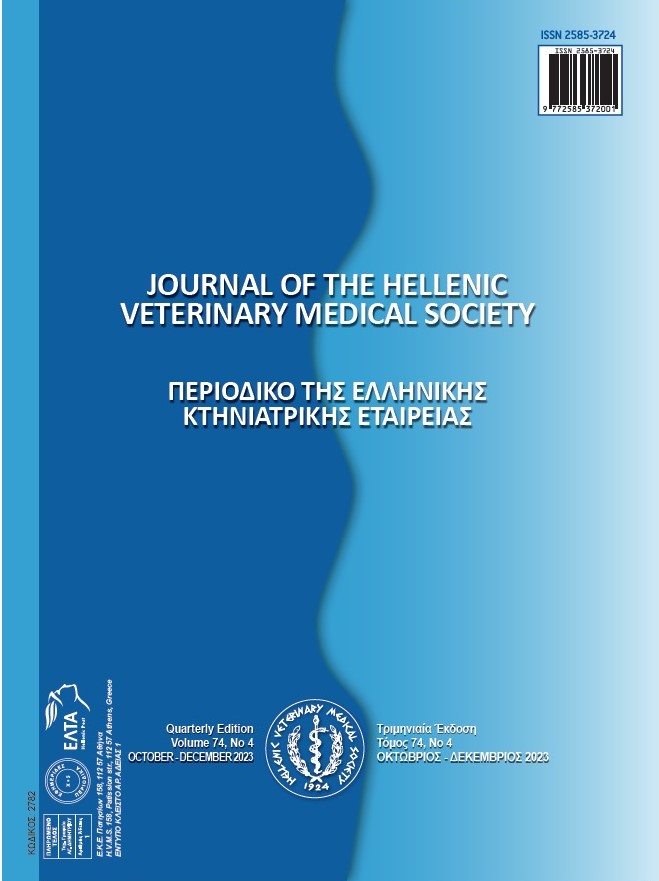Investigation of the presence of equine herpesvirus-1 (EHV-1) in tissue samples of aborted foals by histopathological, immunohistochemical, and Real-Time PCR techniques

Abstract
Equine herpesvirus-1 (EHV-1) is a cause of pneumonia, encephalitis, and abortion in horses. Abortions occur alive or dead in the last trimester of pregnancy. The aim of this study is to investigate the incidence of EHV-1 infections in the tissue samples of aborted stillborn and live-born foals and the foals which died soon after birth and compare and correlate the conventional histopathologic diagnosis with IHC and Real-Time PCR. For this purpose, tissue samples (lung, liver, spleen, kidney, placenta, and brain) of 38 foals from Istanbul, Kocaeli, Bursa, and Eskişehir provinces of Turkey between August 2009 and March 2011 were examined Real-Time PCR revealed 52.6 % positivity (20/38), whereas 39.4 % (15/38) positivity was achieved with IHC, which indicated a correlation between these two diagnostic methods. In histopathological evaluation, the inclusion body was found in at least one of the tissue sections belonging to the lung, spleen, and mostly liver of 20 foals (52.6%). Tissue samples of the foals found to be positive by IHC and PCR revealed histopathologic findings compatible with the characteristics of the disease.
Article Details
- How to Cite
-
Deniz, S., Gülçubuk, A., Sönmez, K., Altan, E., Aytemiz Danyer, I., Gürel, A., & Yılmaz, H. (2024). Investigation of the presence of equine herpesvirus-1 (EHV-1) in tissue samples of aborted foals by histopathological, immunohistochemical, and Real-Time PCR techniques. Journal of the Hellenic Veterinary Medical Society, 74(4), 6695–6706. https://doi.org/10.12681/jhvms.34093
- Issue
- Vol. 74 No. 4 (2023)
- Section
- Research Articles

This work is licensed under a Creative Commons Attribution-NonCommercial 4.0 International License.
Authors who publish with this journal agree to the following terms:
· Authors retain copyright and grant the journal right of first publication with the work simultaneously licensed under a Creative Commons Attribution Non-Commercial License that allows others to share the work with an acknowledgement of the work's authorship and initial publication in this journal.
· Authors are able to enter into separate, additional contractual arrangements for the non-exclusive distribution of the journal's published version of the work (e.g. post it to an institutional repository or publish it in a book), with an acknowledgement of its initial publication in this journal.
· Authors are permitted and encouraged to post their work online (preferably in institutional repositories or on their website) prior to and during the submission process, as it can lead to productive exchanges, as well as earlier and greater citation of published work.


